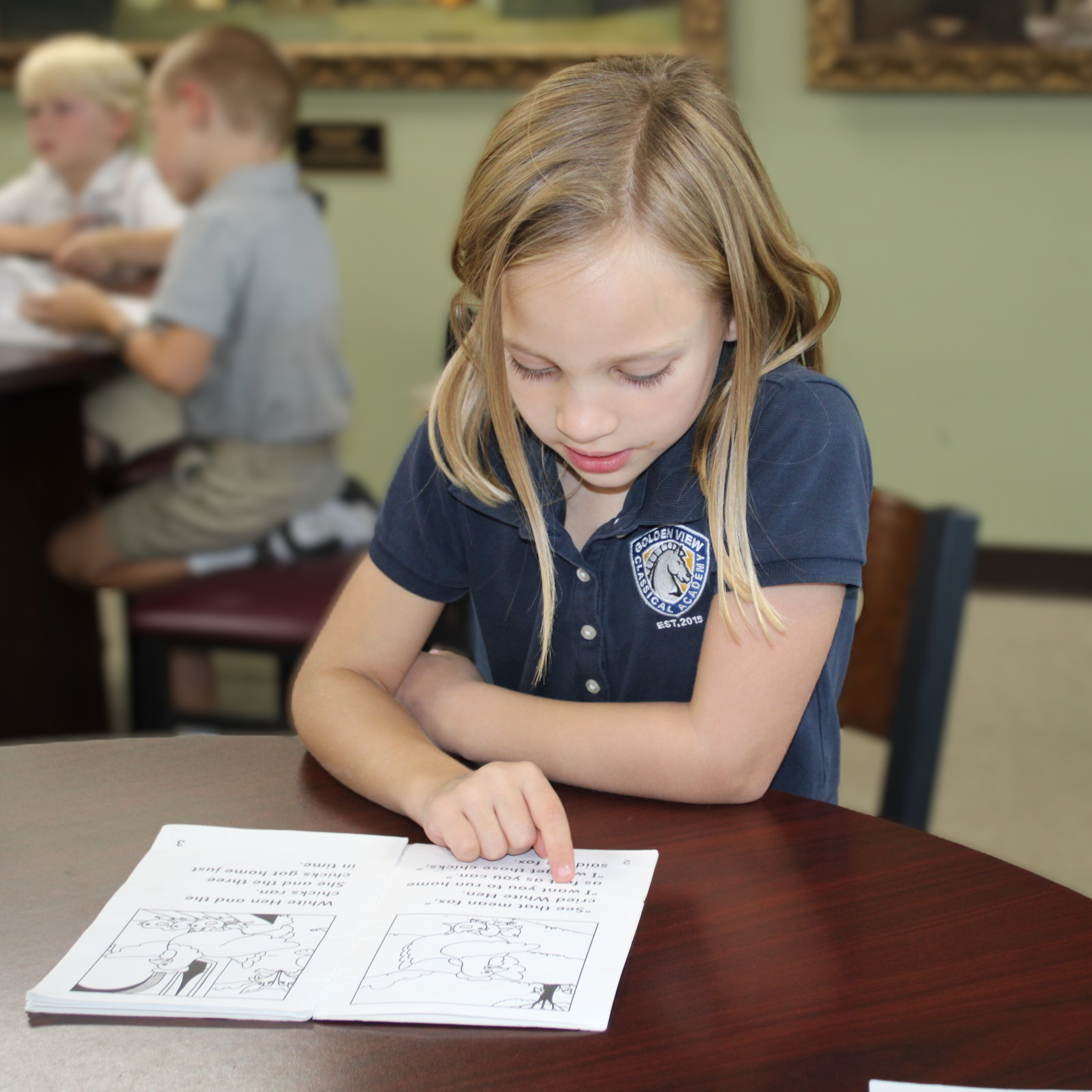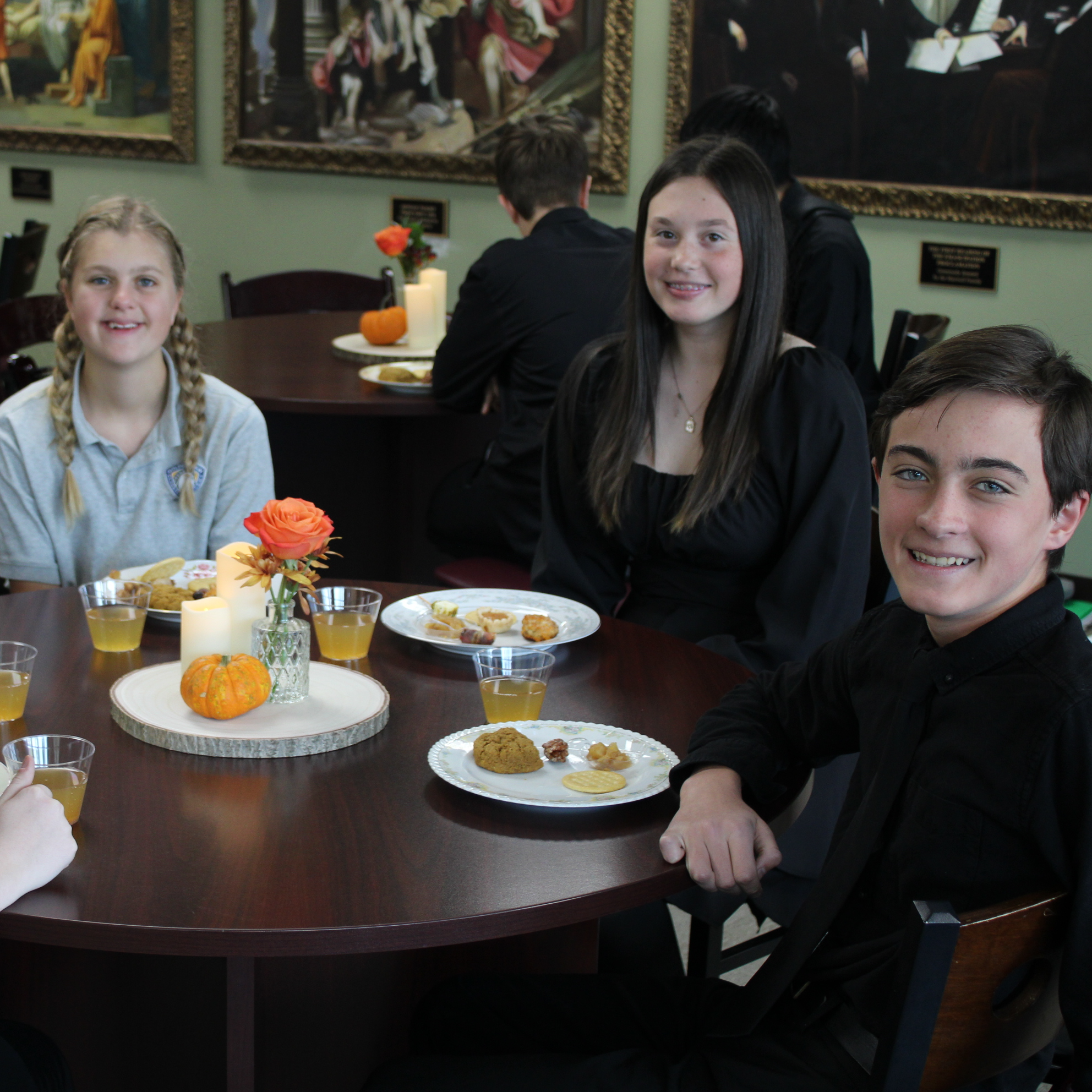The foundation in Grammar School is learning to read and write. Beginning in Kindergarten we begin presenting students with explicit phonics based instruction that teaches students the foundational skills of reading, writing, and spelling. They begin by learning the very basic parts of language which are the sounds and phonograms. Once the phonograms are mastered students are able to put the sounds together to form words, and then sentences. Our Kindergartners begin reading simple sentences and words within the first few months of school. They will focus on learning the phonogram sounds for the letters of the alphabet throughout their first year in school. By the end of the year they are able to read words, sentences and beginner books.
The learning continues throughout a student's time in Grammar School. In first and second grades students continue learning multi-letter phonograms and by the time they finish second grade they have mastered all 72 phonograms which are the written symbols for the 42 sounds used to make up the English language. In grades third through sixth the focus moves to morphology. This is the study of how parts of words, called morphemes, create different meanings by combining with each other. Grammar School students learn the meaning and usage of prefixes, suffixes and roots. This helps them develop literacy skills, including understanding content vocabulary, increasing reading comprehension, and expanding spelling ability.
Teachers do this through direct and Socratic instruction with a multi-sensory approach (auditory, visual, verbal and motor).When you observe a phonics/morphology lesson you will notice that it is not a passive lesson, where students are listening and taking notes. These lessons engage all students at once using a question-answer and choral response flow. This type of lesson teaches analytical thinking, maintains attention of all students, and addresses all ability levels at once. It is incredible to watch students so engaged, in a not so engaging subject. If you have a chance, I would highly recommend observing a phonics lesson in K-2nd or a morphology lesson in 3rd-6th.
From Mrs. Emge, Literacy Lead






